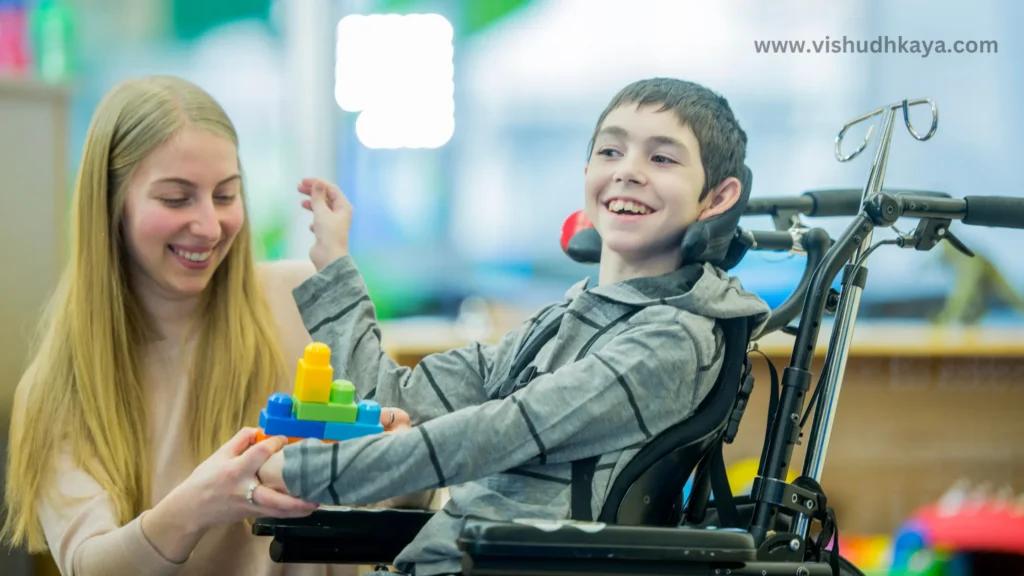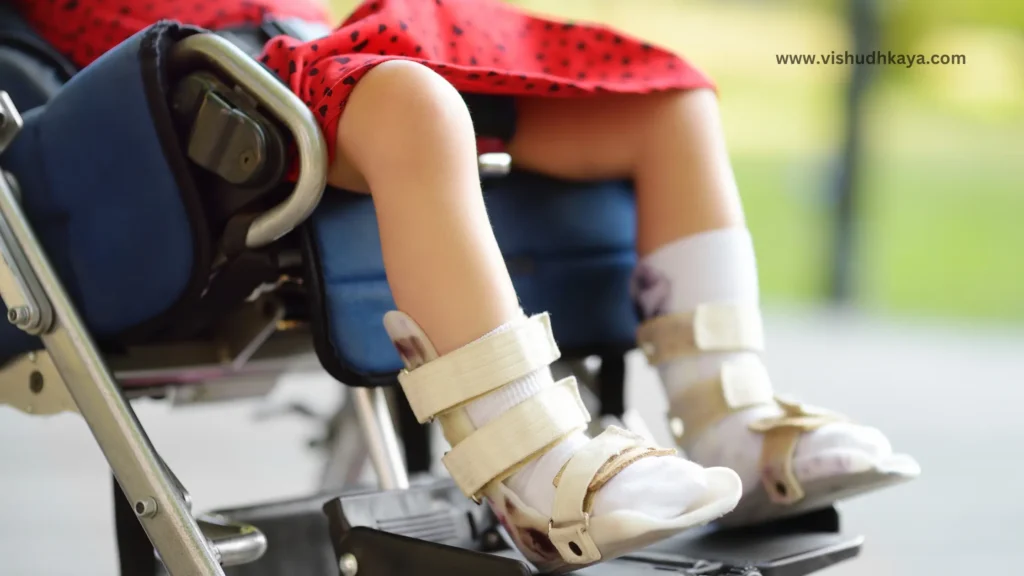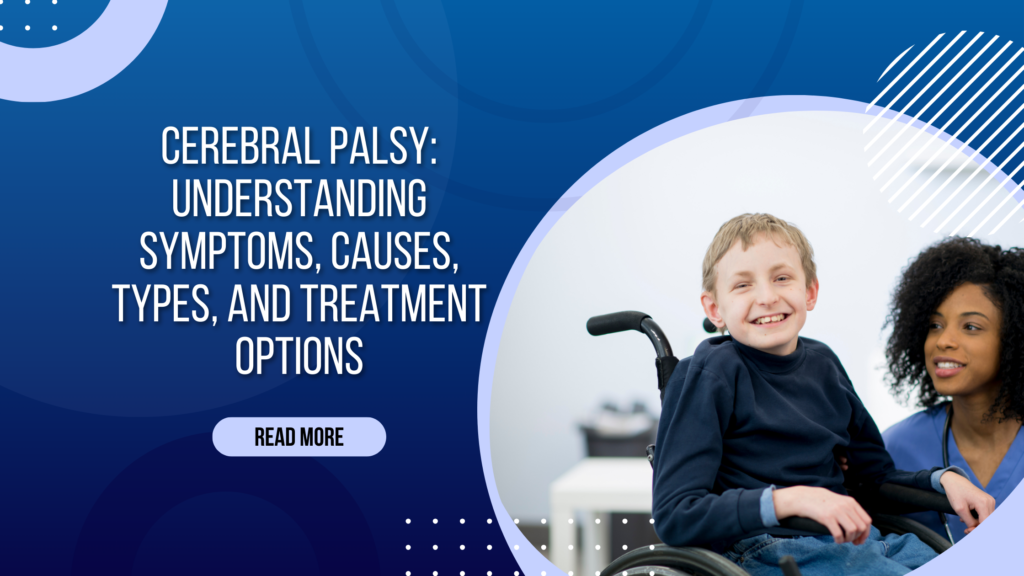Imagine a parent watching their child attempt to crawl for the first time, only to notice unusual stiffness or difficulty in movement. Moments of excitement turn into questions, and those questions lead to a life-changing diagnosis: cerebral palsy (CP). For families worldwide, CP introduces unique challenges but also inspires extraordinary resilience and strength.
The term “Cerebral” refers to the brain, and “Palsy” refers to muscle weakness or poor control. CP is not a progressive condition, meaning the brain injury does not worsen over time, though its effects may change as individuals age.
Historically, cerebral palsy was first identified in the mid-19th century by British physician William John Little, who studied motor impairments caused by brain damage in children. Over the years, medical advancements have improved diagnostic techniques and treatment options, leading to a better understanding of CP and its various causes.
Early diagnosis and intervention are crucial for improving the quality of life for individuals with cerebral palsy. Timely therapies—such as physical, occupational, and speech therapy—allow children to gain better control over their movements and significantly enhance their development.
Cerebral palsy is a common condition, affecting approximately 2 out of every 1,000 newborns, with about 40% of cases being severe. It is the most prevalent motor disorder in children, second only to autism in terms of childhood disabilities.
This blog will explore the causes, symptoms, types, diagnosis, preventive measures, and treatment options for cerebral palsy. We will also highlight how Vishudh Kaya’s holistic approach provides comprehensive support for individuals with CP and their families, fostering hope and empowerment every step of the way.
What Exactly is Cerebral Palsy?

Cerebral palsy definition: Cerebral palsy is a neurological disorder that affects motor skills, muscle control, and coordination. It occurs due to damage or abnormalities in the developing brain, typically before, during, or shortly after birth. This damage interrupts the brain’s ability to effectively communicate with muscles, leading to a range of motor and physical challenges.
How CP Affects the Body
- Muscle Stiffness (Spasticity): Increased muscle tone makes movements rigid and challenging.
- Uncontrolled Movements (Dyskinesia): Involuntary, jerky, or repetitive movements interfere with daily activities.
- Balance and Coordination Issues (Ataxia): Poor stability and precision affect walking and fine motor tasks.
- Postural Challenges: Difficulty maintaining an upright or comfortable position.
- Associated Conditions: Seizures, vision or hearing problems, intellectual disabilities, and speech difficulties.
Unsure about your symptoms or diagnosis? Vishudh Kaya can help assess the condition and offer personalized treatment plans to improve the quality of life.
What Causes Cerebral Palsy?
Understanding the causes of cerebral palsy is essential for prevention and early intervention. CP results from brain damage or abnormal development during pregnancy, birth, or early infancy.
Key Causes Include:
Prenatal Brain Injury: Oxygen deprivation, maternal infections, or exposure to harmful substances.
● Oxygen Deprivation: Intrauterine hypoxia, caused by conditions like placental abruption or umbilical cord issues, limits oxygen supply to the baby’s brain.
● Infections in the Mother: Viral, bacterial, or parasitic infections such as rubella, toxoplasmosis, or cytomegalovirus can cross the placenta, causing inflammation and damaging neural pathways.
● Exposure to Harmful Substances: Maternal exposure to drugs, alcohol, or environmental toxins can interfere with brain cell formation and growth.
● Prematurity and Low Birth Weight: Babies born too early or too small are more likely to have underdeveloped organs, including the brain, making them more susceptible to complications like bleeding (periventricular leukomalacia).
Complications During Birth: Birth asphyxia, prolonged labour, or use of assisted delivery devices.
● Birth Asphyxia: Insufficient oxygen supply during labour and delivery, also known as hypoxic-ischemic encephalopathy, can lead to brain damage.
● Prolonged or Difficult Labor: Situations, where labour takes too long or progresses abnormally, may increase the risk of trauma or oxygen deprivation.
● Use of Assisted Delivery Devices: Tools like forceps or vacuum extractors, though sometimes necessary, can occasionally cause physical trauma or injury to the baby’s head.
Maternal Health Conditions: Infections like chorioamnionitis or untreated jaundice.
● Chorioamnionitis: An infection of the placenta and amniotic fluid is linked to inflammation and potential brain damage in the baby.
● Untreated Jaundice: If not addressed, severe jaundice caused by high bilirubin levels can lead to kernicterus, a form of brain damage that causes CP.
● Preeclampsia or Eclampsia: These hypertensive disorders in pregnancy can restrict blood flow to the baby’s brain, affecting its development.
Genetic and Developmental Abnormalities: Brain malformations or metabolic disorders.
● Brain Malformations: Conditions like cortical dysplasia, where the brain’s surface develops abnormally, can predispose the child to movement disorders.
● Metabolic Disorders: Rare metabolic conditions that interfere with nutrient processing may impact brain development, indirectly causing cerebral palsy.
● Genetic Mutations: Specific genetic mutations, although uncommon, may impair the brain’s ability to handle normal stresses, leading to injury.
Postnatal Causes: Brain infections, traumatic injuries, or lack of oxygen after birth.
● Infections in Early Life: Severe brain infections like meningitis or encephalitis can cause inflammation and damage.
● Traumatic Brain Injuries: Falls, car accidents, or abusive head trauma (shaken baby syndrome) can lead to long-term neurological issues.
● Lack of Oxygen Post-Birth: Respiratory distress, near-drowning, or choking incidents in early infancy may deprive the brain of oxygen, resulting in CP.
At Vishudh Kaya, we specialize in identifying the root causes of cerebral palsy and providing holistic care tailored to each family’s needs.
What Are the Key Symptoms of Cerebral Palsy?

Early recognition of cerebral palsy symptoms can lead to timely intervention and better outcomes. Early recognition of these signs can make a significant difference in the quality of life for individuals and their families.
Common Symptoms:
- Muscle stiffness (spasticity).
- Difficulty walking or irregular gait.
- Tremors or involuntary movements.
- Poor coordination and balance.
Types of Cerebral Palsy:
- Spastic CP: Stiff, rigid movements.
- Dyskinetic CP: Involuntary, twisting motions.
- Ataxic CP: Poor coordination and shaky movements.
- Mixed CP: A combination of symptoms from multiple types.
If you notice signs of cerebral palsy, Vishudh Kaya offers early intervention therapies to enhance mobility and coordination. Contact us today!
How Cerebral Palsy Affects Daily Life
Living with CP brings physical, emotional, and social challenges. Everyday tasks like eating, dressing, and walking can be difficult, while emotional stress and social isolation may also arise. These difficulties vary depending on the severity of the condition, but they often require unique strategies for managing daily activities and maintaining well-being.
1. Physical Impact
Everyday Tasks: Simple activities like eating, dressing, and personal care can be challenging due to muscle stiffness, coordination problems, or limited mobility, often requiring adaptive devices.
Movement and Mobility: Walking may be difficult, with many individuals relying on mobility aids like wheelchairs, crutches, or walkers to assist with movement.
Physical Strain: Performing physical tasks or engaging in prolonged activities can lead to exhaustion, affecting overall participation and quality of life.
2. Emotional and Mental Health Effects
Individuals: Living with physical limitations can cause emotional distress, including feelings of frustration, sadness, or anxiety, especially when facing daily challenges.
Families: Caring for a loved one with CP can be emotionally taxing for family members, who may experience stress, worry, and fatigue in their caregiving roles.
3. Social Impact
Engagement in Activities: Participation in school, work, or social events may be hindered by mobility or communication difficulties, which can limit opportunities for connection and inclusion.
Social Perceptions: Individuals with CP may encounter misunderstandings or biases, which can lead to isolation and affect their social interactions.
Vishudh Kaya provides specialized therapies to improve mobility, independence, and overall quality of life. Reach out to us for support.
Diagnosis of Cerebral Palsy
Diagnosing CP involves physical evaluations, neurological assessments, and imaging scans like MRI or CT. Early diagnosis is crucial for effective treatment and improved outcomes.
Physical Evaluation: Doctors observe motor function, muscle tone, reflexes, and coordination to identify potential signs of CP.
Neurological Assessments: These tests focus on brain function to determine the degree of any neurological impairment.
Imaging Scans (MRI or CT): Detailed brain scans help identify any structural abnormalities that could be linked to CP.
What Are the Most Effective Treatments for Cerebral Palsy?
Cerebral palsy treatment focuses on improving mobility, managing symptoms, and enhancing quality of life. There are a variety of approaches, from conventional therapies to alternative treatments, that can help individuals with CP lead more independent lives.
Conventional Treatments:
- Physical therapy.
- Medications for muscle stiffness and pain.
- Surgical procedures to correct deformities.
Alternative Therapies:
● Osteopathy: A hands-on approach that targets improving movement and relieving tension by manipulating the musculoskeletal system.
● Ayurveda: A natural treatment system that utilizes herbs, diet, and holistic therapies to support balance and overall well-being.
● Homeopathy: Uses natural remedies to address symptoms and support the body’s healing processes, promoting overall wellness and managing the symptoms associated with cerebral palsy.
● Chiropractic Care: Aims to improve spinal alignment, reduce discomfort, and promote better movement through adjustments and manipulations.
Vishudh Kaya combines traditional and holistic therapies to manage CP symptoms. Contact us for a personalized consultation.
Holistic Solutions for Cerebral Palsy at Vishudh Kaya

Our multidisciplinary approach includes manual therapy, customized exercise plans, Ayurvedic treatments, and homoeopathic remedies to improve strength, flexibility, and coordination.
Multidisciplinary Treatment:
● Manual Therapy: Our therapists use hands-on techniques to improve joint function, relieve muscle tension, and support better movement patterns.
● Customized Exercise Plans: Tailored exercise routines are designed to target specific areas like strength, coordination, and flexibility, helping to improve day-to-day mobility.
● Ayurvedic Treatment: We incorporate traditional Ayurvedic methods, utilizing natural remedies and therapies that enhance muscle function and promote overall wellness.
● Homeopathic Treatment: Homeopathic treatments are used to address specific symptoms and promote long-term health by stimulating the body’s natural healing processes. It can help in improving overall well-being and managing some of the associated symptoms of CP.
Preventive Measures and Support for Families
Caring for a loved one with CP requires emotional support, rehabilitation exercises, and collaboration with medical professionals. Caring for a loved one with cerebral palsy (CP) can be both fulfilling and demanding. It’s essential to create an environment that supports their independence, offers rehabilitation, and provides emotional care. Here are some tips for families and caregivers:
Encourage Independence: Allow your loved one to take on tasks by themselves when possible, ensuring the environment is safe and adapted to their needs.
Rehabilitation Exercises: Stick to prescribed exercises and therapies that help improve mobility, flexibility, and strength, which are crucial for daily functioning.
Emotional Support: A nurturing and positive environment plays a key role in mental well-being, boosting self-esteem and confidence.
Work with Medical Professionals: Regular check-ins with healthcare providers ensure your loved one’s care plan is up to date and tailored to their changing needs.
Vishudh Kaya offers family support and guidance to help you provide the best care for your loved one with cerebral palsy. Reach out today for expert advice and support.
Conclusion
Cerebral palsy impacts movement and coordination, but with the right care, individuals with CP can lead fulfilling lives. At Vishudh Kaya, we provide holistic, personalized treatment plans to enhance mobility, strength, and overall well-being. We partner with families and caregivers to ensure the best outcomes, focusing on enhancing independence and daily functionality.
If you or a loved one is affected by cerebral palsy, book a consultation with Vishudh Kaya today to explore our treatment options and begin your journey toward improved health and quality of life.
📞 Call us at: +91-76781 35151
📍 Visit us at: #8566, Sector 125, Sunny Enclave, Kharar, Mohali, Punjab 140301
🌐 Book online at: https://vishudhkaya.com
Don’t wait—empower yourself with Vishudh Kaya Pain Relief and Multispeciality Clinic!


